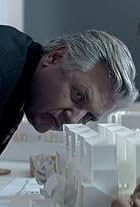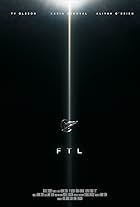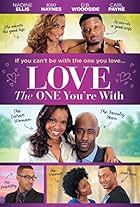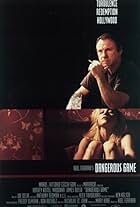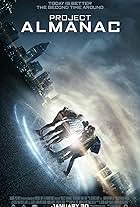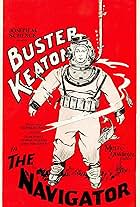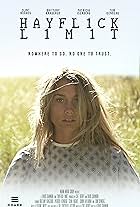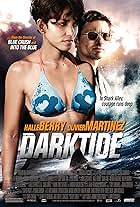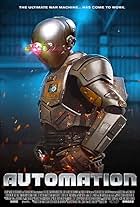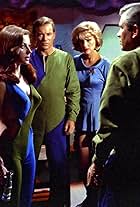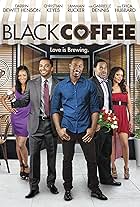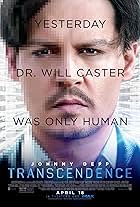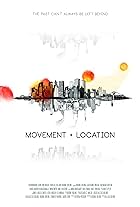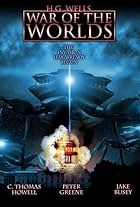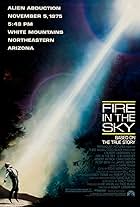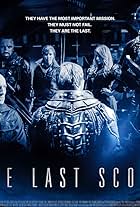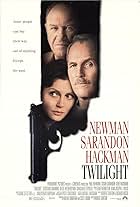
ulisses_phoenix
Joined Apr 2020
Welcome to the new profile
We're still working on updating some profile features. To see the badges, ratings breakdowns, and polls for this profile, please go to the previous version.
Ratings48
ulisses_phoenix's rating
Reviews35
ulisses_phoenix's rating
When I decided to watch this film, I was afraid it was going to be some kind of lowbrow comedy. It was anything but that. Although there is some comedy and lots of romance, it's not a RomCom. It doesn't follow the RomCom formula at all. It's a well-produced, character-driven drama focused on the main character, Jamie (played by Marguerite Moreau). Although there are many supporting characters in this film, they are not really fully developed as their own characters and are merely there as vehicles to advance the development and evolution of the main character. The supporting characters are developed, to be sure, but only as needed to advance the story. If fact, I think there are only a few minutes of screen time when those supporting characters are on their own, otherwise they are interacting somehow with Jamie. I'm sure that this was intentional on the part of the screenwriter in order to keep the focus on the main story (the evolution of the main character) and to avoid having the film look like some kind of ensemble comedy.
The dialogue was well written and replete with emotion and subtlety, much of which I'm sure was beyond my ability to understand. And the acting was world-class, not a single bad performance. Many of the scenes in this drama, I imagine, were difficult for the players, but they executed flawlessly. The score and cinematography were unobtrusive and perfectly suited to the mood and tone of the scenes they supported. There were a few hand-held shots but they were rare and completely appropriate to the scenes.
With regard to race, this film was diverse in the composition of the cast and there was absolutely no derision or bias at all. In fact, race was irrelevant in this film. The main character (who is a white woman) had an intimate, platonic relationship with her black neighbor, Martin (played by D.B. Woodside) and there was interracial romance in the film, too. Also, one of Jamie's love interests, John (played by Naveen Andrews) is of southern Indian ethnicity. This film is one of the most inclusive, unbiased films I've ever seen. Well done!
Overall, a well-produced, original story with great acting and no racial bias. This film is easily an 8/10, but I'm giving it a 9/10 because it was so inclusive and unbiased.
Advisory: drug use by the protagonist, suicide, infidelity.
Rating 9/10; submitted 2020/09/23, 22:50 EDT
The dialogue was well written and replete with emotion and subtlety, much of which I'm sure was beyond my ability to understand. And the acting was world-class, not a single bad performance. Many of the scenes in this drama, I imagine, were difficult for the players, but they executed flawlessly. The score and cinematography were unobtrusive and perfectly suited to the mood and tone of the scenes they supported. There were a few hand-held shots but they were rare and completely appropriate to the scenes.
With regard to race, this film was diverse in the composition of the cast and there was absolutely no derision or bias at all. In fact, race was irrelevant in this film. The main character (who is a white woman) had an intimate, platonic relationship with her black neighbor, Martin (played by D.B. Woodside) and there was interracial romance in the film, too. Also, one of Jamie's love interests, John (played by Naveen Andrews) is of southern Indian ethnicity. This film is one of the most inclusive, unbiased films I've ever seen. Well done!
Overall, a well-produced, original story with great acting and no racial bias. This film is easily an 8/10, but I'm giving it a 9/10 because it was so inclusive and unbiased.
Advisory: drug use by the protagonist, suicide, infidelity.
Rating 9/10; submitted 2020/09/23, 22:50 EDT
Finally, a scifi film that's actually based on speculative science! This well-produced film shows what science fiction is actually about: science, technology, discovery. So many scifi films coming out of Hollywood these days are just war movies or gory horror films disguised as scifi. In many of them you could just replace the phasers with M-16s and you wouldn't be able to tell the difference between them and a 20th-century pro-war propaganda film.
How refreshing it was to see a film about hope, aspiration, and discovery; not dystopia, apocalypse, and violence. The technology depicted in this film seems to be based on what may be possible using known physics. Of course there were some aspects that were there just to make it more visually appealing, like the streamlined spaceship (vehicles in the vacuum of space that manipulate spacetime for displacement don't need to be aerodynamic), or the bright lights coming from the back of the spacecraft (high-energy radiation is not in the visible spectrum). But these types of filmmaking choices are almost necessary to create a visual and audio experience that's compelling and exciting.
The filmmakers appeared to make the right choices when it came to the allocation of scarce production resources. They hired competent actors, they focused on creating high-quality CGI and sound, and they didn't waste a lot of money on props and sets that might have detracted from the quality of the production (e.g., they didn't try to fabricate a space helmet for the astronaut, which probably would have looked goofy anyway -- helmets in low-budget scifi films always look goofy). The result was a high-quality product. (Although at one point I found myself calling out at the screen, "Put you're helmet on you fool!" -- but he didn't have one. Oh well.)
I really like how this film was inclusive on race. The small cast in this short film included a black woman in the top position at the flight center (played by Karin Konoval), a Hispanic/Middle Eastern (Moor) woman as the astronaut's partner (played by Aliyah O'Brien), and an Asian woman TV reporter (played by Mana Mansour). And there was no racial derision at all in this film, which often happens in Hollywood films. I also like the fact that most of the people were of mixed race which is very realistic because a hundred years from now most people will be of mixed race in an equitable society. (Although in a post-Hamilton entertainment industry a person of any race can play any character: past, present or future.) And judging by the surnames in the credit roll, the crew was equally diverse.
I would have made a different choice on gender, though. I would have had a female astronaut and had her husband anxiously waiting at home for her safe return. But I like to break stereotypes...
Story-wise, the film limited itself to a snapshot of a much bigger story. At just 15 minutes, we get about 10% of that bigger story. I hope the filmmakers get the funding (and latitude) to produce an entire feature or serial about this story. It would be quite entertaining.
Overall, a well-produced film that puts big-studio films to shame. This would easily get a 9/10 rating but because it was so inclusive and equitable on race, it gets a 10.
Advisory: None. Suitable for all audiences.
Rating 10/10; submitted 2020/9/15 10:00 EDT
How refreshing it was to see a film about hope, aspiration, and discovery; not dystopia, apocalypse, and violence. The technology depicted in this film seems to be based on what may be possible using known physics. Of course there were some aspects that were there just to make it more visually appealing, like the streamlined spaceship (vehicles in the vacuum of space that manipulate spacetime for displacement don't need to be aerodynamic), or the bright lights coming from the back of the spacecraft (high-energy radiation is not in the visible spectrum). But these types of filmmaking choices are almost necessary to create a visual and audio experience that's compelling and exciting.
The filmmakers appeared to make the right choices when it came to the allocation of scarce production resources. They hired competent actors, they focused on creating high-quality CGI and sound, and they didn't waste a lot of money on props and sets that might have detracted from the quality of the production (e.g., they didn't try to fabricate a space helmet for the astronaut, which probably would have looked goofy anyway -- helmets in low-budget scifi films always look goofy). The result was a high-quality product. (Although at one point I found myself calling out at the screen, "Put you're helmet on you fool!" -- but he didn't have one. Oh well.)
I really like how this film was inclusive on race. The small cast in this short film included a black woman in the top position at the flight center (played by Karin Konoval), a Hispanic/Middle Eastern (Moor) woman as the astronaut's partner (played by Aliyah O'Brien), and an Asian woman TV reporter (played by Mana Mansour). And there was no racial derision at all in this film, which often happens in Hollywood films. I also like the fact that most of the people were of mixed race which is very realistic because a hundred years from now most people will be of mixed race in an equitable society. (Although in a post-Hamilton entertainment industry a person of any race can play any character: past, present or future.) And judging by the surnames in the credit roll, the crew was equally diverse.
I would have made a different choice on gender, though. I would have had a female astronaut and had her husband anxiously waiting at home for her safe return. But I like to break stereotypes...
Story-wise, the film limited itself to a snapshot of a much bigger story. At just 15 minutes, we get about 10% of that bigger story. I hope the filmmakers get the funding (and latitude) to produce an entire feature or serial about this story. It would be quite entertaining.
Overall, a well-produced film that puts big-studio films to shame. This would easily get a 9/10 rating but because it was so inclusive and equitable on race, it gets a 10.
Advisory: None. Suitable for all audiences.
Rating 10/10; submitted 2020/9/15 10:00 EDT
While I was seeking out projects featuring D.B. Woodside, I found this little-known TV film which was produced by independent RLJ Entertainment for its Urban Movie Channel (UMC) (before RLJ was acquired by AMC). UMC includes original TV series and movies and when I saw that this was a TV movie, I thought it was going to be a made-for-TV movie (shot on film with a low budget for a TV audience). However, when the movie began, it was immediately apparent from the image lag on the video that this movie was shot using old-style TV video. It was also shot live using a 3 or 4 camera setup on a single set, like a soap opera. Now I remember why I stopped watching scripted TV.
These types of productions have a unique personality. The acting is done in stage-acting style and this production appeared to have a live audience. There weren't multiple, separate takes for each shot -- it was just continuously shot and acted like a stage play. This can be demanding on the players because they need to remember and recall all of their lines and stage directions flawlessly for the entire scene. The result is a much lower quality performance and this movie was no exception in that regard. The advantage of shooting this way is much lower production costs and no continuity errors, and this movie had none that I could see. This film was shot entirely on that one set with what looked like stock footage between the acts for transition and establishing shots.
The story follows the lives of the three main characters, the sisters, as they deal with their relationships and careers, often having difficult choices to make in the process. The tension comes from the choices the characters must make among career options and sometimes having to choose between their dream job or their romantic partner. The characters are strongly defined, but the dialogue is written in a blunt, direct style common to TV scripts. In this film, the players would simply directly convey the message the writer wanted to deliver. Exposition was likewise very direct rather than coming across more naturally -- typical of TV scripts.
With regard to race, the entire cast was played by black actors and it appears that all of the above-the-line folks were also black people and of course, being made for UMC, the expected audience was black viewers. There didn't appear to be any derision or negative depictions or stereotypes in the movie, which often happens in major studio films. When the content came close to touching on such issues, the characters would directly and expressly discuss the topic to quench any possible negative interpretations. Most of the characters were of the suburban, middle-to-upper income demographic with generally high socioeconomic occupations and education. The characters used correct grammar and pronunciation for the most part, but as time went on and the players became more relaxed in their roles they occasionally slipped up and used "axe" instead of "ask" or dropped the "are" after a pronoun, but that was rare and I'm sure the intent of the writer/director was to avoid substandard grammar/pronunciation in the dialogue.
Overall, if you like stories about the problems that women often encounter in their lives and careers; and you don't really care about things like cinematography, tight dialogue or flawless acting then this TV-quality production might be for you. It's not my thing so I would have likely given it a rating of 4 or 5, but because it contained no racially derisive content, I'm giving it rating of 6.
Advisories: none; suitable for all audiences.
Rating: 6/10; submitted 9/12/20, 22:25 EDT
These types of productions have a unique personality. The acting is done in stage-acting style and this production appeared to have a live audience. There weren't multiple, separate takes for each shot -- it was just continuously shot and acted like a stage play. This can be demanding on the players because they need to remember and recall all of their lines and stage directions flawlessly for the entire scene. The result is a much lower quality performance and this movie was no exception in that regard. The advantage of shooting this way is much lower production costs and no continuity errors, and this movie had none that I could see. This film was shot entirely on that one set with what looked like stock footage between the acts for transition and establishing shots.
The story follows the lives of the three main characters, the sisters, as they deal with their relationships and careers, often having difficult choices to make in the process. The tension comes from the choices the characters must make among career options and sometimes having to choose between their dream job or their romantic partner. The characters are strongly defined, but the dialogue is written in a blunt, direct style common to TV scripts. In this film, the players would simply directly convey the message the writer wanted to deliver. Exposition was likewise very direct rather than coming across more naturally -- typical of TV scripts.
With regard to race, the entire cast was played by black actors and it appears that all of the above-the-line folks were also black people and of course, being made for UMC, the expected audience was black viewers. There didn't appear to be any derision or negative depictions or stereotypes in the movie, which often happens in major studio films. When the content came close to touching on such issues, the characters would directly and expressly discuss the topic to quench any possible negative interpretations. Most of the characters were of the suburban, middle-to-upper income demographic with generally high socioeconomic occupations and education. The characters used correct grammar and pronunciation for the most part, but as time went on and the players became more relaxed in their roles they occasionally slipped up and used "axe" instead of "ask" or dropped the "are" after a pronoun, but that was rare and I'm sure the intent of the writer/director was to avoid substandard grammar/pronunciation in the dialogue.
Overall, if you like stories about the problems that women often encounter in their lives and careers; and you don't really care about things like cinematography, tight dialogue or flawless acting then this TV-quality production might be for you. It's not my thing so I would have likely given it a rating of 4 or 5, but because it contained no racially derisive content, I'm giving it rating of 6.
Advisories: none; suitable for all audiences.
Rating: 6/10; submitted 9/12/20, 22:25 EDT
